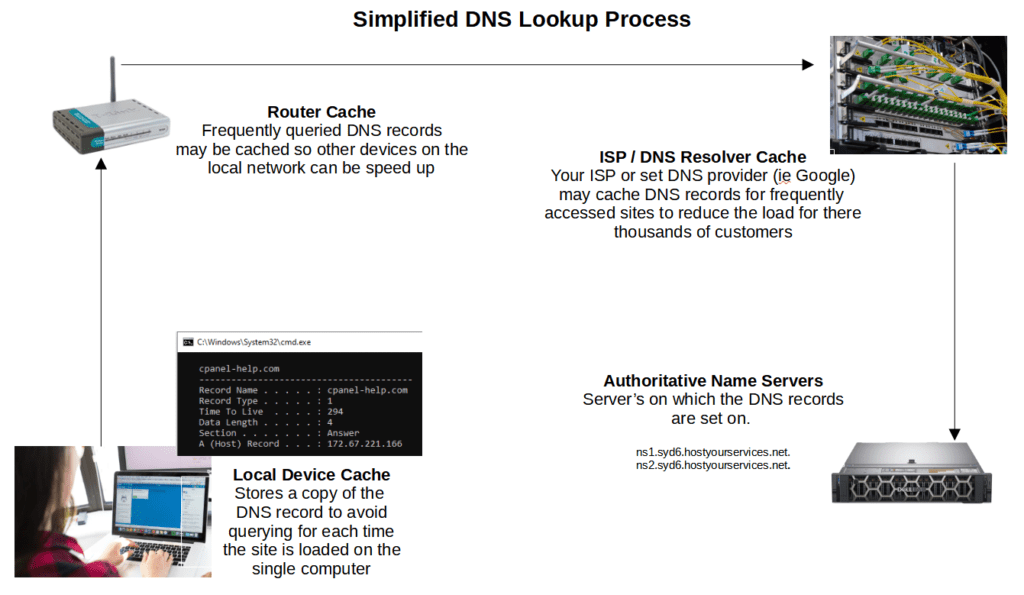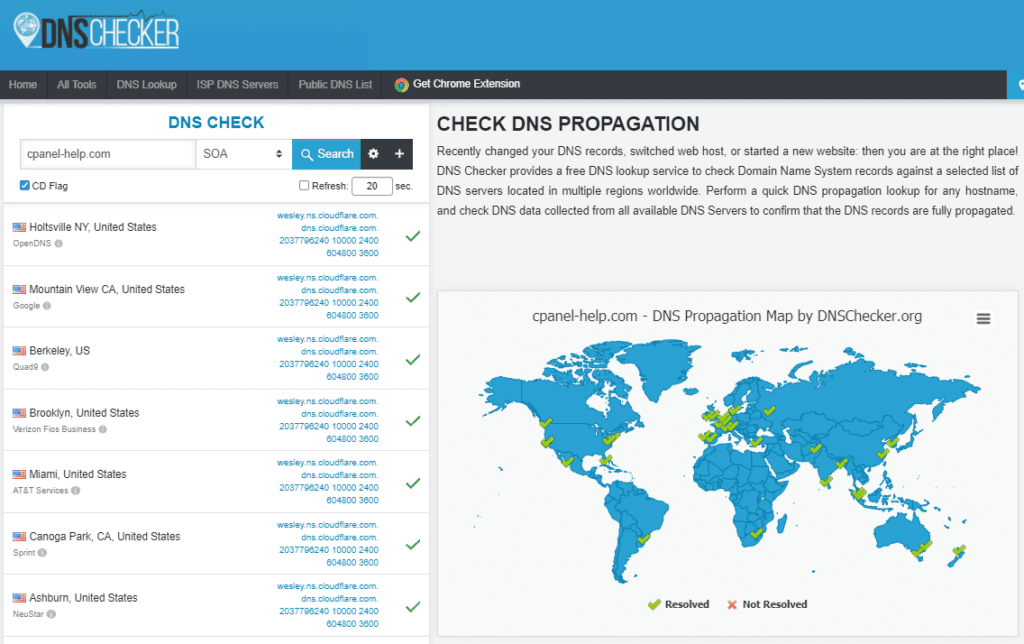DNS Propagation is the delay it takes from when a DNS record is updated, to when DNS servers around the world clear their caches and return the most up-to-date record when queried.
This delay can range from seconds, to over 48 hours in extreme cases. Factors that contribute to how long this time is include:
- If the local computer or device has recently visited the domain and cached the DNS record
- If the DNS record has been cached by the local computers or devices DNS Name Servers
- What the TTL value has been set on the DNS record
DNS records are ‘cached’ in multiple places to increase site performance and reduce the load on the server hosting the site. This is as DNS records do not typically change regularly and it would significantly slow down the site if every computer had to perform a DNS query for every website action.

The above diagram outlines the places where DNS records may be cached.
When performing a DNS lookup, the device will first check its local cache, then possibly the routers, or ISP’s DNS servers which may have caching enabled. The ‘TTL’ (Time to Live) which is a number attached to the DNS record (often between 60 and 86400) specifies how many seconds the device can cache the record for before it must renew it.
As DNS is ‘pull’, it’s up to the DNS server the device is using to get the latest DNS records from the authoritative Name Servers where the original DNS records are set. There is no way for the web host or service provider to force the records to refresh.
In most cases, the most reliable solution for DNS propagation is to wait as the issue should resolve itself within 48 hours.
You can verify your DNS records have been set correctly and have propagated across the globe by using a tool such as
DNS Checker: https://dnschecker.org

